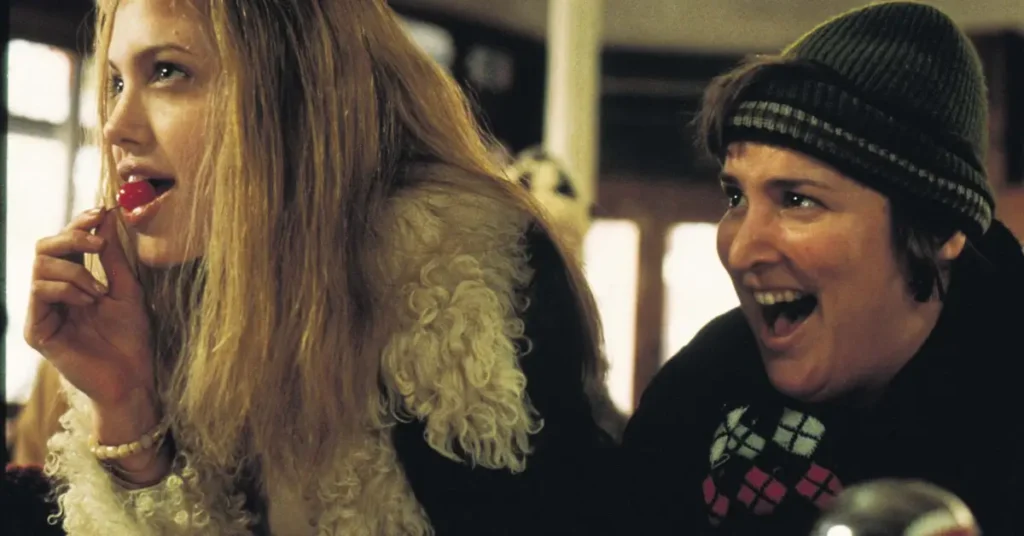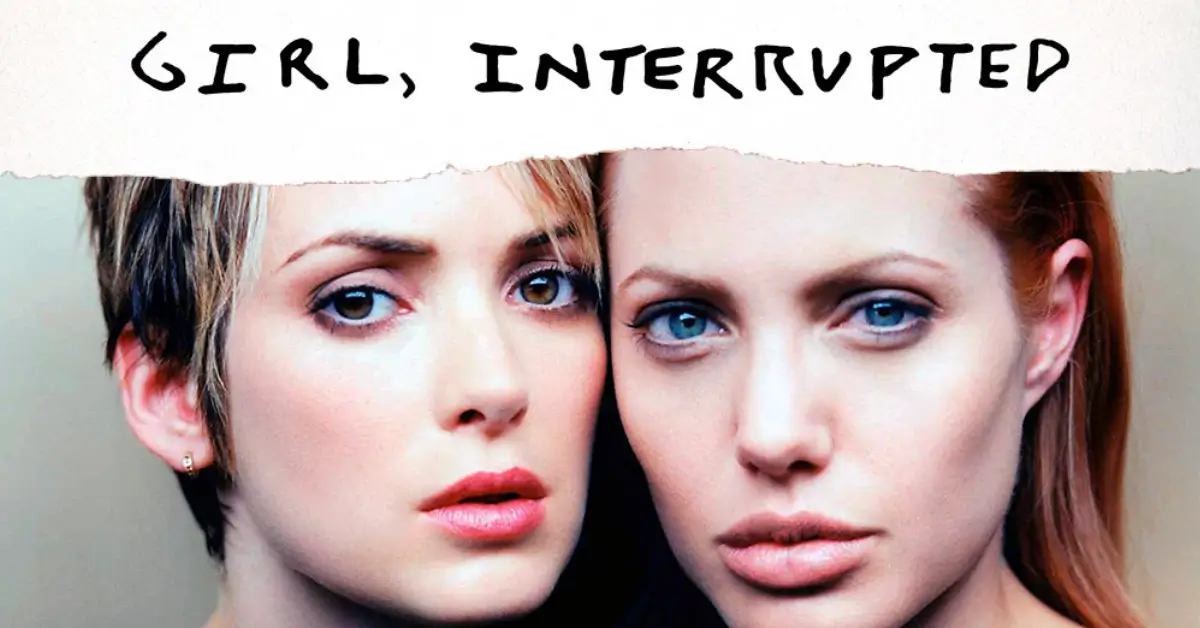Girl Interrupted: A Powerful Exploration of Mental Health in Cinema
In the landscape of films that tackle mental health, few have made as lasting an impression as “Girl Interrupted.” This powerful drama offers viewers an intimate glimpse into the world of psychiatric institutions in the 1960s while exploring the complex realities of mental illness through its compelling characters. The film stands as a significant contribution to cinema’s portrayal of mental health conditions, challenging viewers to reconsider their perceptions of normality, treatment approaches, and the thin line between sanity and madness.
Thank you for reading this post, don't forget to subscribe!Basic Film Information
Title: Girl, Interrupted
Release Date & Production Year: December 21, 1999
Director: James Mangold, known for his character-driven narratives and ability to elicit powerful performances, particularly in films like “Walk the Line” and “Logan”
Screenwriter: James Mangold, Lisa Loomer, and Anna Hamilton Phelan, adapting Susanna Kaysen’s memoir of the same name
Main Cast & Characters:
- Winona Ryder as Susanna Kaysen, diagnosed with borderline personality disorder
- Angelina Jolie as Lisa Rowe, a charismatic sociopath
- Brittany Murphy as Daisy Randone, struggling with OCD and trauma
- Elisabeth Moss as Polly “Torch” Clark, dealing with schizophrenia
- Clea DuVall as Georgina Tuskin, a pathological liar
- Vanessa Redgrave as Dr. Wick, the head psychiatrist
- Whoopi Goldberg as Nurse Valerie
Genre: Psychological Drama
Awards Won: Academy Award for Best Supporting Actress (Angelina Jolie), Golden Globe for Best Supporting Actress (Angelina Jolie)
Runtime & Rating: 127 minutes, Rated R for strong language, violence, and sexual content

Plot Summary
General Overview
Based on Susanna Kaysen’s memoir, “Girl, Interrupted” follows the journey of Susanna, a young woman who, after a suicide attempt, checks herself into Claymoore psychiatric hospital for what she expects to be a brief stay. Instead, she spends nearly two years in the institution, forming complex relationships with other female patients while confronting her own mental health struggles.
Mental Health Themes
The film explores several mental health conditions including borderline personality disorder, sociopathy, obsessive-compulsive disorder, depression, and trauma responses. It delves into how these conditions manifest and the treatment approaches of the late 1960s, including therapy, medication, and sometimes controversial practices like isolation rooms.
Key Turning Points
Susanna’s initial resistance to treatment gradually transforms as she develops relationships with fellow patients. The film pivots around several crucial moments: Lisa’s manipulative influence over the ward, Daisy’s tragic outcome after leaving the hospital, and Susanna’s eventual recognition of her own agency in recovery. These pivotal scenes highlight the complexities of mental illness treatment and the interpersonal dynamics within institutional settings.
Ending Analysis
The film concludes with Susanna’s release from Claymoore after she acknowledges her illness and actively participates in her treatment. While not offering easy answers, the ending suggests hope and possibility, implying that understanding and accepting one’s mental health challenges is a crucial step toward healing. Lisa remains institutionalized, raising questions about the varying paths to recovery and whether some conditions prove more resistant to treatment than others.
Setting & Cinematic Techniques
Filming Locations
Set primarily within Claymoore Hospital (filmed at Harrisburg State Hospital in Pennsylvania), the institutional setting becomes almost a character itself. The hospital’s cold, clinical atmosphere with its locked doors, sterile corridors, and sparse rooms effectively communicates the isolation and confinement experienced by patients.
Cinematography
Cinematographer Jack Green employs distinctive visual techniques to reflect characters’ mental states. The film often uses natural lighting contrasted with harsh fluorescents to distinguish the outside world from the institution. Close-up shots capture emotional distress, while wider angles emphasize isolation. The color palette shifts subtly throughout cooler, desaturated tones dominate early scenes, gradually warming as Susanna progresses in her treatment.
Sound & Music
The soundtrack features period-appropriate songs from the late 1960s, including Simon & Garfunkel and The Chambers Brothers, which not only establish the era but also reflect characters’ emotional journeys. The score by Mychael Danna creates an atmosphere of unease and introspection, with recurring motifs that signal Susanna’s emotional states. Sound design is particularly effective during crisis scenes, with amplified ambient noises reflecting sensory overwhelm.
Acting & Character Portrayal
Lead Actor’s Performance
Winona Ryder delivers a nuanced performance as Susanna, capturing both her rebellious exterior and inner vulnerability. Ryder portrays borderline personality disorder with subtlety, conveying emotional instability, identity confusion, and impulsivity without resorting to caricature. Her transformation from denial to self-awareness feels authentic and earned.
Supporting Cast
Angelina Jolie’s Oscar-winning performance as sociopathic Lisa is electric and disturbing, embodying both charisma and danger. The ensemble cast delivers memorable portrayals of various mental health conditions Brittany Murphy’s portrayal of OCD and trauma in Daisy is particularly heartbreaking. Whoopi Goldberg and Vanessa Redgrave represent different approaches to treatment, adding depth to the institutional perspective.
Accuracy & Authenticity
While dramatic license is taken, the film achieves considerable authenticity in depicting borderline personality disorder and the psychiatric treatment methods of the era. The portrayals avoid sensationalism, instead focusing on the humanity of characters living with mental illness. The film succeeds in showing that mental health conditions exist on spectrums rather than in absolutes.

Mental Health Representation: Strengths & Weaknesses
Psychological Accuracy
Based on Kaysen’s memoir, the film benefits from a first-person perspective of mental illness. Consultants were employed during production to ensure clinical accuracy. The portrayal of borderline personality disorder is particularly strong, capturing its defining characteristics while avoiding stigmatizing tropes.
Stigmatization vs. Awareness
“Girl, Interrupted” challenges stigma by humanizing its characters they are not defined solely by their diagnoses. The film questions the societal standards that determine who is “crazy” and who is “normal,” suggesting that the boundary is often arbitrary and influenced by gender expectations. However, some critics argue that Lisa’s sociopathy veers into the “dangerous mental patient” stereotype that can reinforce fear.
Impact on Public Perception
The film significantly raised awareness about borderline personality disorder, previously little-known to general audiences. It sparked discussions about women’s mental health treatment and institutional care. By depicting characters as complex individuals rather than walking diagnoses, it helped normalize conversations about mental health.
Critical Reception & Awards
Critics’ Reviews
Upon release, critical reception was mixed but leaned positive. While some critics praised its performances and unflinching look at mental illness, others found fault with its occasional melodrama. Roger Ebert gave it 3.5/4 stars, praising its “emotional authenticity.” Over time, critical appreciation has grown, particularly for its contributions to mental health representation.
Audience Reactions
Viewers with lived mental health experience have had varied responses many appreciate the film’s raw depiction of institutional life and the complexity of recovery, while some critique simplifications inherent in adapting real experiences to screen. The film has developed a devoted following, particularly among younger viewers discovering it years after its release.
Awards & Nominations
Beyond Jolie’s Academy Award and Golden Globe wins for Best Supporting Actress, the film received recognition from several mental health organizations for its contribution to destigmatizing mental illness. Its lasting cultural impact has exceeded its modest awards recognition.
Cultural & Social Impact
Discussions Sparked
“Girl, Interrupted” prompted important conversations about women’s mental health, the sometimes arbitrary nature of psychiatric diagnosis, and the ethics of institutional treatment. It raised questions about how society responds to those who don’t conform to expected behaviors, particularly women.
Influence on Other Films
The film established a template for more nuanced mental health portrayals in cinema. Its influence can be seen in later works like “Silver Linings Playbook,” “The Perks of Being a Wallflower,” and “It’s Kind of a Funny Story” films that similarly balance the serious reality of mental illness with humanity and even moments of unexpected joy.
Mental Health Advocacy
While not explicitly tied to advocacy organizations, the film has been used in educational contexts to build understanding of borderline personality disorder and psychiatric treatment history. It helped create space for more open discussions about mental health in popular culture at a time when such conversations were less common.
Personal Reflection & Final Thoughts
“Girl, Interrupted” provides profound insights into the experience of being institutionalized and the complex journey toward mental health. Its greatest strength lies in its refusal to offer simple solutions or to demonize either patients or caregivers. Instead, it presents a world where everyone is struggling in their own way.
I would recommend this film to someone struggling with mental health, but with caveats some scenes depict self-harm, suicide attempts, and tragic outcomes that could be triggering. The film is best viewed as a historical portrait rather than a guide to contemporary treatment options.
If there’s room for improvement, the film could have provided more context about how mental health treatment has evolved since the 1960s, and perhaps explored more diverse experiences of mental illness across different social and cultural backgrounds.
Conclusion
More than two decades after its release, “Girl, Interrupted” remains a significant work in film’s exploration of mental health. It challenges viewers to look beyond labels and diagnoses to see the complex individuals beneath. Its lasting impact stems from its refusal to offer easy answers while still affirming the possibility of healing and growth.
The film reminds us that mental health journeys are rarely linear, often involving setbacks alongside progress. By portraying its characters with depth and humanity, “Girl, Interrupted” invites audiences to extend that same empathy and understanding to those facing mental health challenges in real life.
What are your thoughts on this film’s portrayal of mental health? Has your perception of psychiatric institutions or borderline personality disorder been influenced by this powerful drama?

